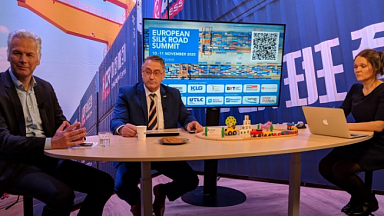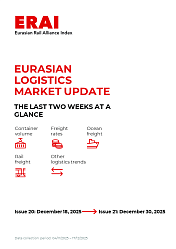Spot rates declined more sharply, 3.8 points q-o-q. However, the spot index was up by 1.6 points, and the contract index rose by 0.4 points, year on year (y-o-y).
The end-of-year peak period has been followed by a return to low European demand. The start of 2025 has kept down freight rates as consumer demand remains subdued, costs have slowed their growth, and industry sentiment has been dampened as the world engages in a trade war, which brings constant uncertainty and reduced international demand for European manufacturers. The result is reduced demand pressure on all sides, leading to rate falls in both spot and contract markets.
Geopolitical changes and global economic instability have renewed focus on strengthening local and regional economies. This has led to initiatives such as «Buy European», which encourages the support of European goods and businesses. As a result, there is potential for increased demand for dedicated contracts, with a preference for long-term agreements rather than fluctuating spot rates in the medium to long term.
New capacity entering the market has been constrained. Heavy goods vehicle registrations fell by 16% between Q1 2024 and Q1 2025, and by 7% q-o-q. Notably, battery-electric truck registrations grew by 51% y-o-y to reach a 3.5% market share. The driver shortage crisis persists, with 426,000 unfilled truck driver jobs in Europe, according to IRU’s 2024 global truck driver shortage report.
In terms of the underlying cost drivers, diesel prices have increased by 4.8% q-o-q, but have been decreasing lately as the trade situation brings uncertainty to businesses, slowing down global demand for oil.
The latest data on driver wages across Europe suggests that wages are still rising. For example, driver wages increased by 5.1% y-o-y for Spanish drivers conducting international operations, according to the Spanish Ministry of Transport. In Italy, new agreements have led to wage increases of more than EUR 500 per month since the beginning of 2025 to notably cover the time spent waiting at loading and unloading sites. These rises follow 4% y-o-y labour cost increases across the EU in Q4 2024.
In the short term, the broader picture of a potential EU recovery is being held back by ongoing tariff uncertainties and policy disruptions, which continue to weigh on trade flows and the momentum of freight rates.
In the medium term, the outlook is more positive. Real GDP is projected to strengthen, driven by growth in consumption, improved investment, and recovering foreign demand. Economic activity in the euro area is expected to expand by 0.2% across the first three quarters of 2025.
However, the uncertainty that tariffs create will have different consequences in the short term. Businesses will increasingly blend contracts for baseline capacity, using spot rates for flexibility. As a result, the uncertainty could dampen the impact of rising demand on the contract market and amplify pressure on the spot market.




